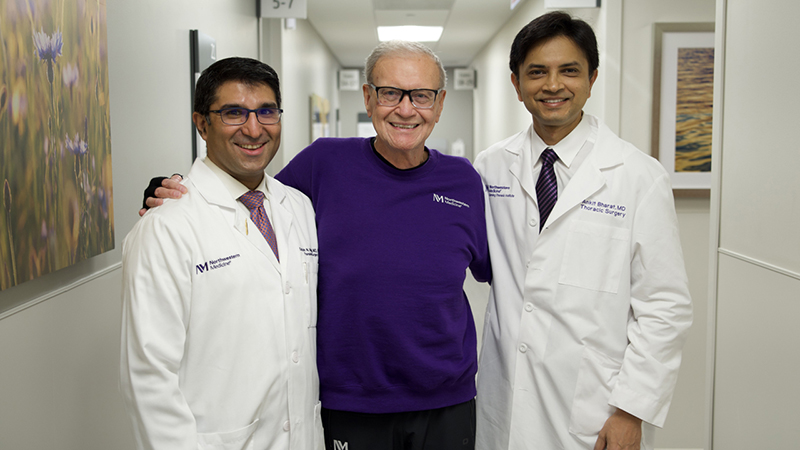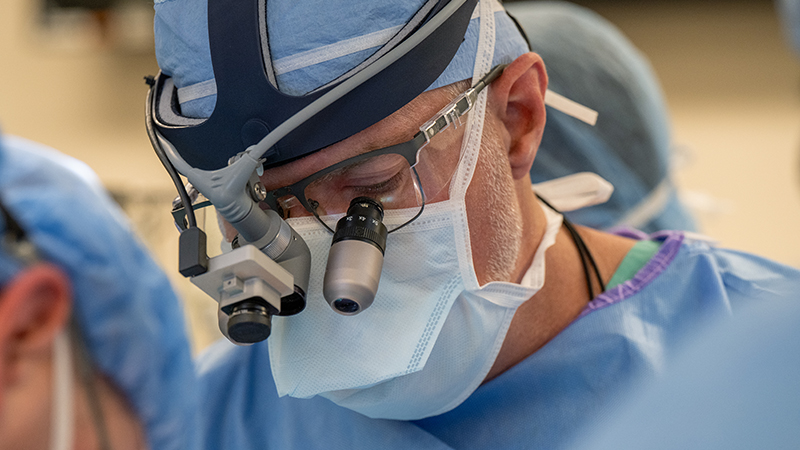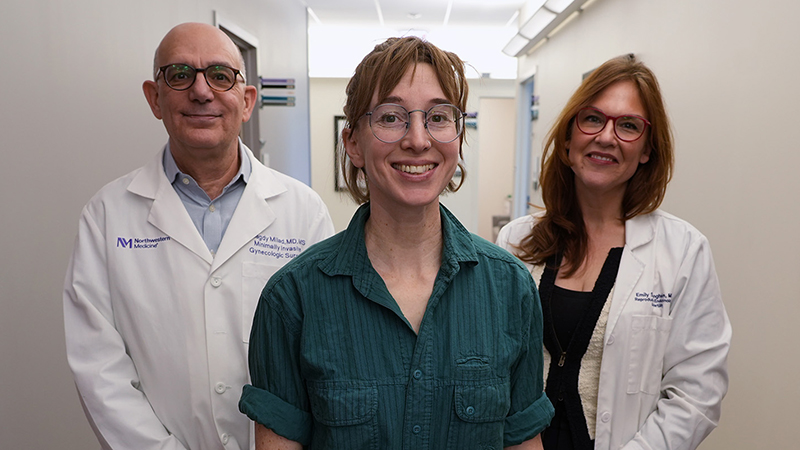Ironman Back to the Races After Bunion Surgery
Published July 2021
Patient and Physician Work Together to Win
Mornings start early for Sal Biundo. His alarm goes off at 4:15 am. Then, he heads out to swim, bike, run or lift weights.
Sal always has his sights on his next fitness goal. Specifically, he focuses on Ironman triathlons. He has traveled across the country, from Panama City, FL to Madison, WI, to complete these events. Sal has done three full Ironman triathlons. Each race involves a 2.4-mile swim, 112-mile bike ride and 26.2-mile run. He has also completed six Half-Ironman races.
Bunions come in many different severities and many don't require surgery.— Shane M. York, DPM
Sal runs something else, too: A hair salon that he has owned since 2013. It keeps him on his feet all day.
When bunions caused him pain that impacted his ability to train and work, Sal came to Northwestern Medicine Podiatrist Shane M. York, DPM. Dr. York was a second opinion for Sal. First, he saw another orthopaedic surgeon at a different clinic. They suggested surgeries that would keep Sal from training for Ironman events. Dr. York worked with Sal to make sure that the bunion surgeries would not only ease his pain, but also get him back to the races as soon as possible.
"I've had issues with bunions for about 10 years and the pain only got worse to the point where I couldn't stand on my feet for a long period of time. The aching pains made every shoe I owned hurt," said Sal. "After completing an Ironman in Madison, WI, I decided to see Dr. York and it was the best decision I've ever made."
Sal underwent two bunion surgeries, six months apart.
One Foot in Front of the Other
A bunion is caused by a shifting of a normal bone into an abnormal position. It presents as a bump on the inside of the foot underneath the big toe. But, it is not a growth like a bone spur.
"Bunions come in many different severities and many don't require surgery," says Dr. York. "If your bunion doesn't hurt or interfere with your normal life — and the shoes you wear —then just because you have a bunion doesn't mean it needs to be addressed surgically."
Bunions can lead to arthritis and pain in the long run.
There are many approaches to bunion surgery. They are based on the severity of the bunion. In Sal's case, his surgery involved removing a small wedge of the metatarsal bone. Then, his surgeon repositioned it so it aligned properly with the other bones in the foot. Dr. York then fused his metatarsal joint together in a straight position. This kept his metatarsal bone from swinging out of position.
"Sal puts more stress on his feet than someone else, which is why his bunions were more aggressive," says Dr. York. "Taking into consideration his young age, activity level and overall health, this procedure was appropriate for him. It will last his lifetime with zero chance of recurrence and stand up to everything he's going to throw at it with his training."
On the Same Team
Sal and Dr. York worked closely during his recovery from both surgeries. They implemented a protocol unique to Sal's lifestyle and goals.
"Sal and I brainstormed ways he could keep up his fitness while recovering in a safe and controlled manner after both of his surgeries," says Dr. York. "The approach to recovery from bunion surgery is always different with each patient."
With both of his bunions fixed, Sal continues to train. He also enjoys watching his 20-, 18- and 15-year-old children, who are runners and swimmers, too, compete just like their dad.
"Sal is proud of his recovery, and our team is proud of him," says Dr. York. "He's an inspiration to us and proof that if you do bunion surgery the right way, you can go on to do Ironman competitions."






